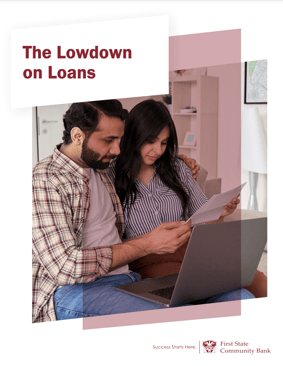Personal Loans
Personal loans represent a broad category of loans, all of which come with few, if any, restrictions regarding how those funds can be used. These loans are a type of consumer loan offered by most financial institutions, and qualifying for them depends on your creditworthiness and ability to repay the loan, based on your income.
Most consumers turn to a personal loan if they have a need for lump-sum funds that don’t fall into one of the categories outlined down below.

Home Loans
Also known as mortgages, home loans are a type of loan you seek out to purchase a home. A number of options are available when seeking out a home loan, ranging from conventional mortgages to FHA loans to first-time home buyer loans to VA loans that may require no down payment for active military personnel and veterans.
Home loans typically offer among the lowest interest rates of any kind of loan, although they can come with more restrictions. Because of the size of the loan and the transfer of properties titles, these loans also require more intensive processing; a typical mortgage approval process requires about 45 days from the day a purchase offer is accepted.
In addition to primary mortgages, borrowers may also seek out home equity loans to borrow money based on the appraised value of the home. These loans are taken on top of an existing mortgage, and they typically charge a higher interest rate.

Auto Loans
Vehicle financing often offers the lowest interest rate of all conventional loan types, making this a more affordable form of debt than many other loan types.
Vehicle loan rates tend to be relatively low because the vehicle can be easily repossessed as collateral if you fail to keep up with your payments. Many lenders are able to process vehicle loan applications quickly, often within a day. Prequalifying with a lender can expedite the approval process to help you purchase your vehicle faster.

Business Loans
Small business and other commercial loans can be found through any bank, credit union or lender that works with small business accounts. These business loans can be more complicated when going through the application and approval process because both your business finances and personal creditworthiness may be evaluated when deciding whether to approve the loan.
Some lenders may offer business loans that are guaranteed by the U.S. Small Business Administration, making them easier to qualify for. Contact your local lenders to learn more about business lending options.

Student Loans
As the cost of college tuition rises, student loans are increasingly essential to affording a college education. Student loans can be found through both private and federal lending options.
Federal student loan products include both subsidized and unsubsidized, and the interest rate charged across these different loan options can vary widely. The U.S. Department of Education offers a number of resources to help you understand your options and search for student loans to meet your needs.
Agricultural Lending
Similar to standard business loans, agricultural loan products are developed specifically to support farming and other agricultural businesses. Some of these loans may be subsidized to support the success of those businesses. Contact your local lender to learn more about these options.

Credit Cards and HELOCs
As mentioned above, revolving credit accounts like credit cards and home equity lines of credit (HELOCs) are types of loans your business may benefit from.
A key difference between credit cards and HELOCs is the interest rate charged; a HELOC can offer a rate competitive with personal and other types of loans, but credit cards are notorious for high interest rates.

















